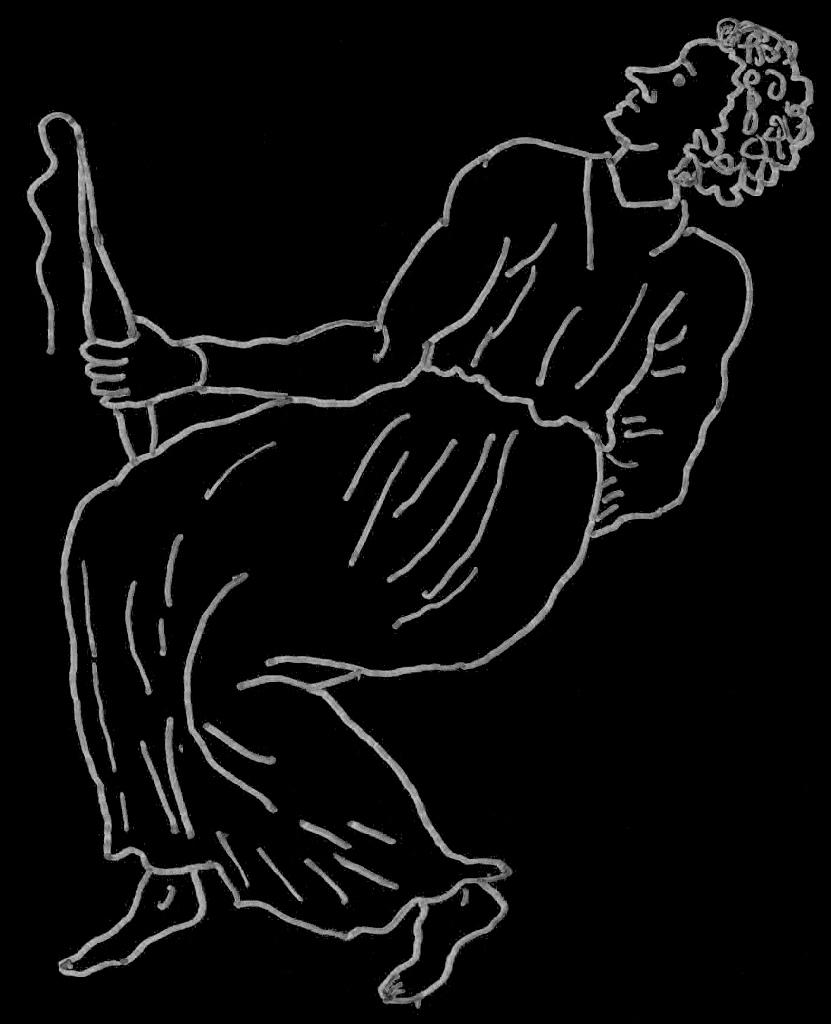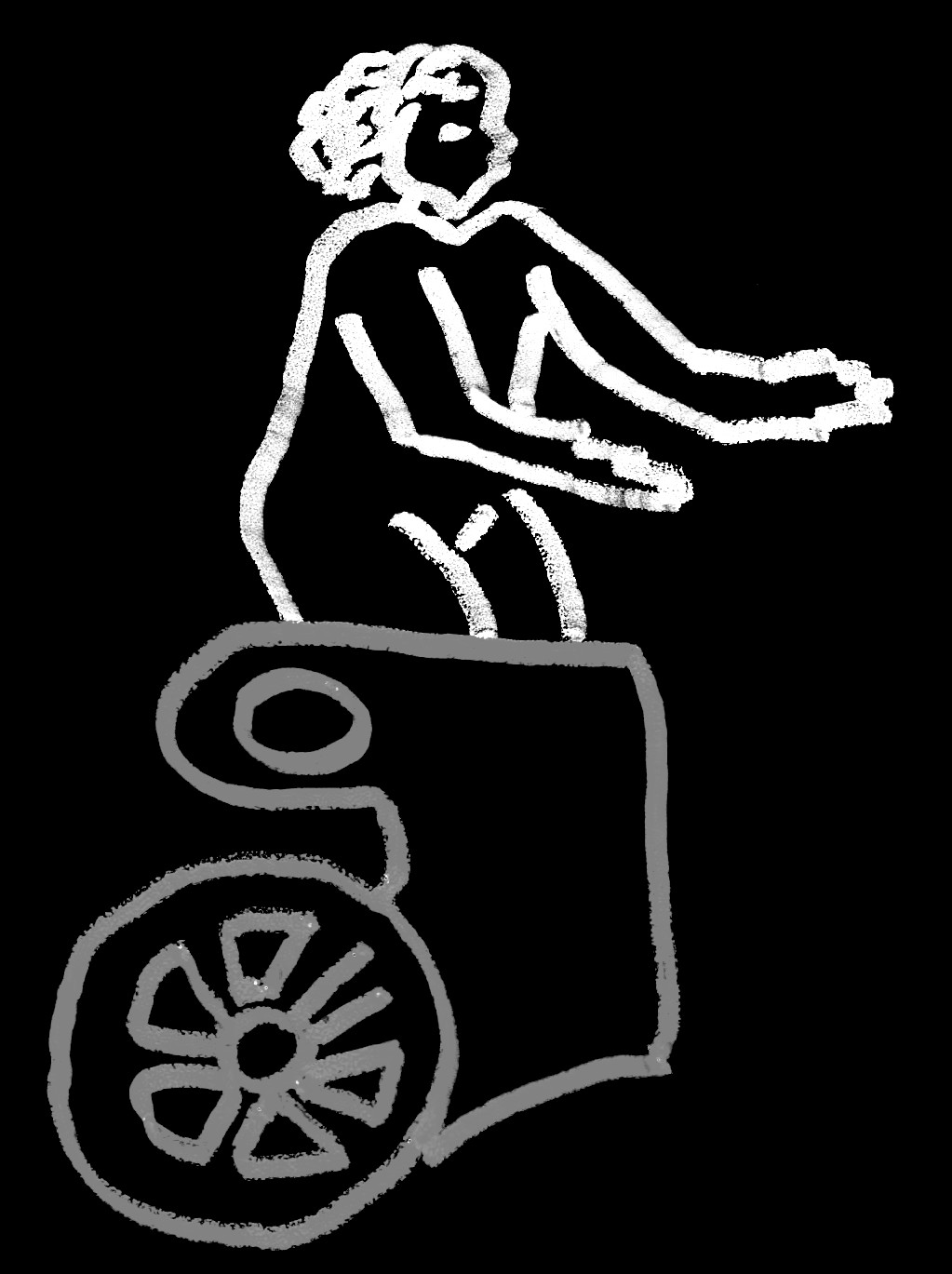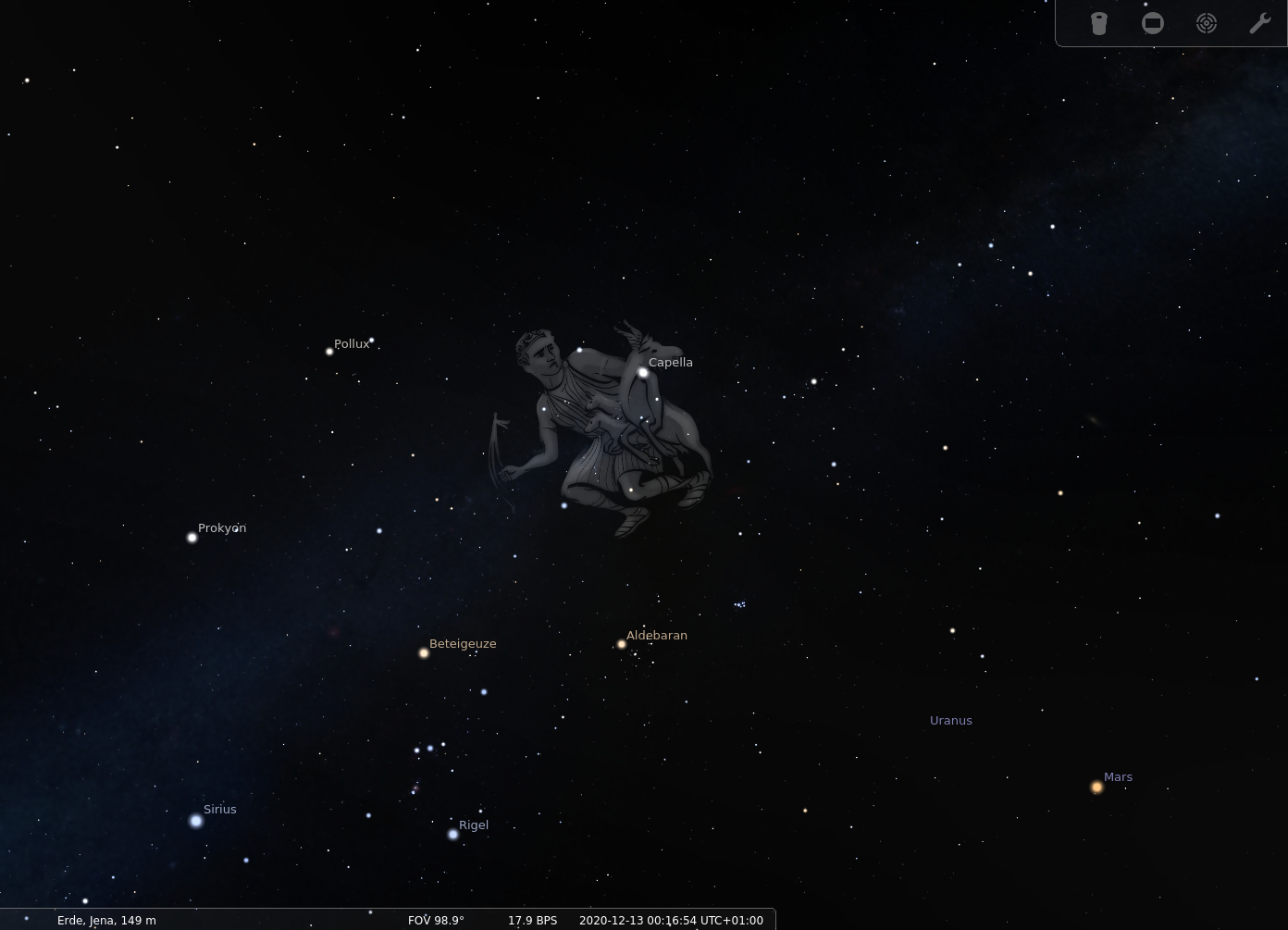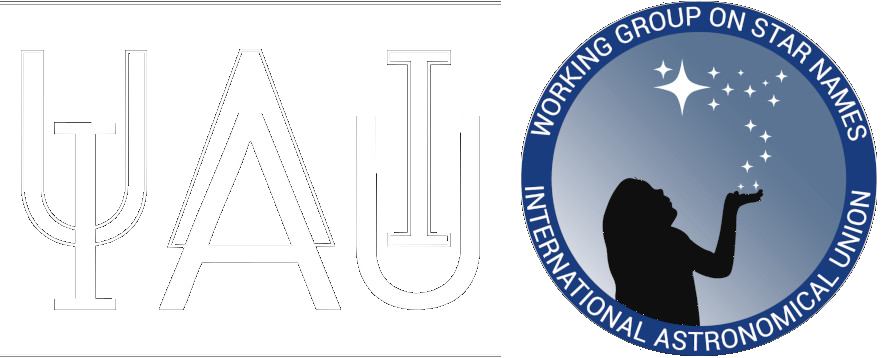Profile / Characteristics
| English translation | Latin declination and pronunciations | Size/ °² | # stars (visible) |
| the Charioteer | Auriga – aw-RYE-guh Aurigae – aw-RYE-ghee | 657 | 157 |
Main Star (brightest one):
| Designation | HIP number | name in IAU-CSN | brightness |
| α Aur | HIP 24608 | Capella | 0.08 mag (V) |
Our (modern) Explanation
Auriga is one of the constellations that even Hellenistic Greek authors like Eratosthenes (3rd. Century BCE) found confusing: the charioteer was considered to drive a fast chariot while simultaneously carrying a goat and her offsprings on his shoulder. The image is likely a multicultural merger.
Ancient Globes



Farnese Globe
Kugel Globe
Mainz Globe
Erichthonios of Athens
Erichthonios of Athens
Ancient Lore & Meaning
Aratus
[156] But if it be thy wish to mark Charioteer [Auriga] and his stars, and if the fame has come to thee of the Goat [Capella] herself and the Kids, who often on the darkening deep have seen men storm-tossed, thou wilt find him in all his might, leaning forward at the left hand of the Twins. Over against him wheels the top of Helice’s head, but on his left shoulder is set the holy Goat, that, as legend tells, gave the breast to Zeus. Her the interpreters of Zeus call the Olenian Goat. Large is she and bright, but there at the wrist of the Charioteer faintly gleam the Kids. [167] At the feet of Charioteer seek for the crouching horned Bull [Taurus]. Very lifelike are his signs; so clear defined his head: not by other sign would one mark the head of an ox, since in such wise those very stars, wheeling on either side, fashion it. Oft-spoken is their name and not all unheard-of are the Hyades. Broadcast are they on the forehead of the Bull. One star occupies the tip of his left horn and the right foot of the Charioteer, who is close by. Together they are carried in their course, but ever earlier is the Bull than the Charioteer to set beneath the West, albeit they fare together at their rising. [713] Nor lags behind the Charioteer at the rising of the Bull, for close are set their courses. But not with that sign does he rise completely, but the Twins bring him wholly up. The Kids and the sole of the Charioteer’s left foot and the Goat herself journey with the Bull,
Reference:
English translation by Douglas Kidd (1997).
Aratus: Phaenomena, Cambridge Classical Texts and Commentaries, Series Number 34
Pseudo-Eratosthenes
it is Erichthonios, son of two gods (Hephaistos and Gaia), who was the first who harnessed horses to a wagon. He was inspired by the vehicle of Helios but used his version to guide a procession for Athena to the acropolis in order to celebrate a cultic festival for her. Euripedes reports the prehistory of this story that Hephaistos was in love with Athena but she refused and his sperm fell on Earth (Gaia). That is why, Erichthonios became a famous fighter and together with another man he guided the Panathenaic; he got the by-name “the jumper”. The constellation is also home to the goat and the goatlets. Musaios reports that this is the goat whose milk was used to feet young Zeus. After her death, grown-up Zeus used her skin to protect himself (on her back she had the face of Gorgo) but he also covered her bones with another skin and redeemed her. Others say, that the charioteer is Myrtilos, the charioteer of king Oinomaos of Pisa on the Peloponnes.
References:
French translation by:
Jordi Pàmias i Massana and Arnaud Zucker (2013). Ératosthènes de Cyrène – Catastérismes, Les Belles Lettres, Paris
English version in:
Robin Hard (2015): Eratosthenes and Hyginus Constellation Myths with Aratus’s Phaenomena, Oxford World’s Classics
Modern and Mediaeval Depiction


Depiction in Stellarium (by Fabien Chéreau, since 2000 CE)
depiction in the Leiden Aratea (9th century CE)
Early Modern Interpretation
Contemporary
As one of their first tasks in the 1920s, the newly founded International Astronomical Union (IAU) established constellation standards. The Belgian astronomer Eugène Delporte was assigned to the task to define borders of constellations parallel to lines of declination and right ascension. They were accepted by the General Assembly in 1928. The standardized names and abbreviations had already been accepted in 1922 and 1925.

